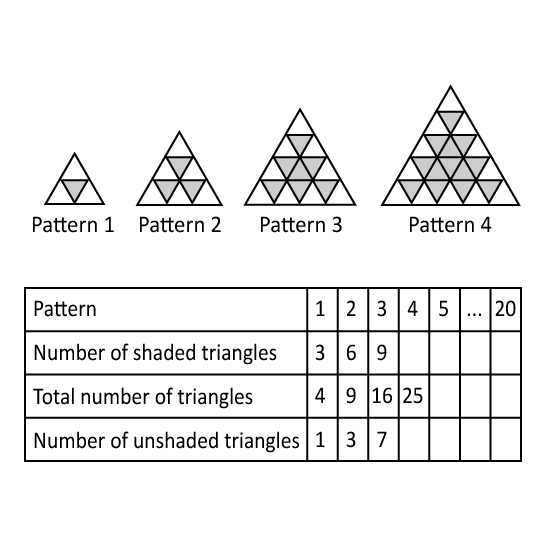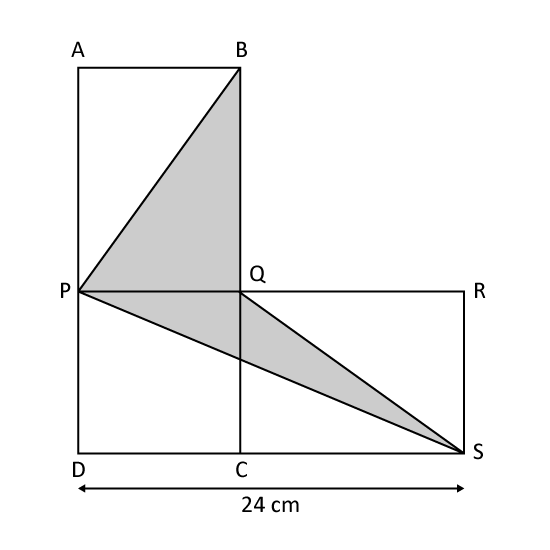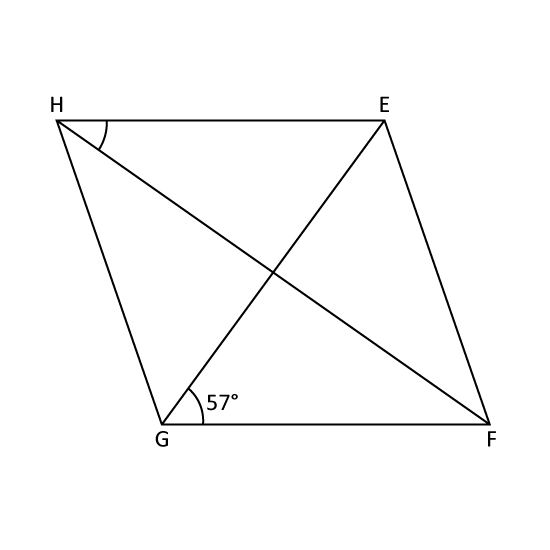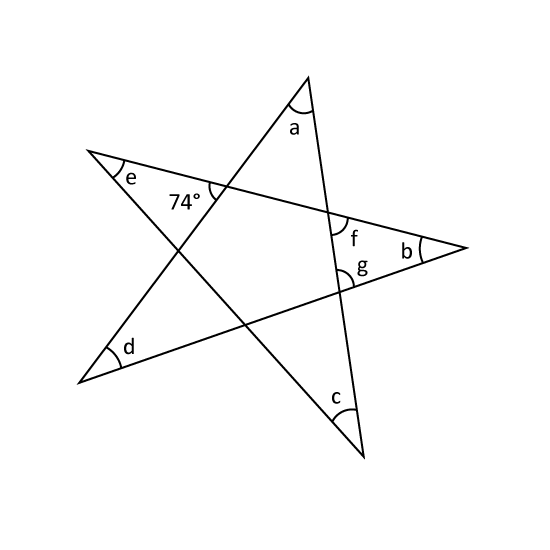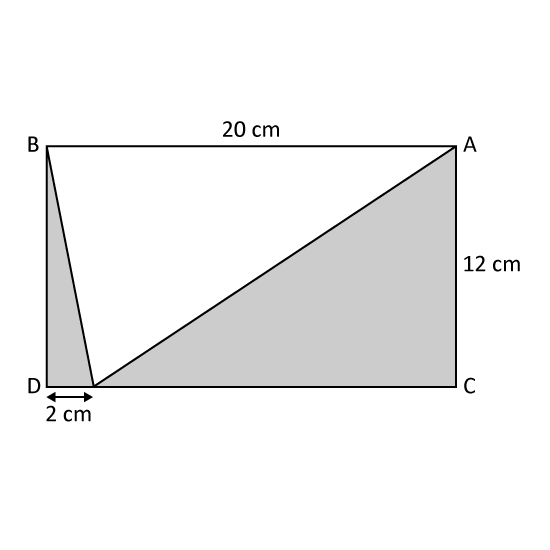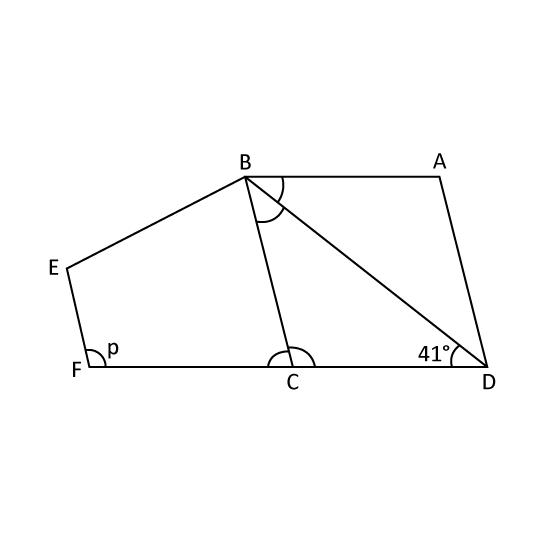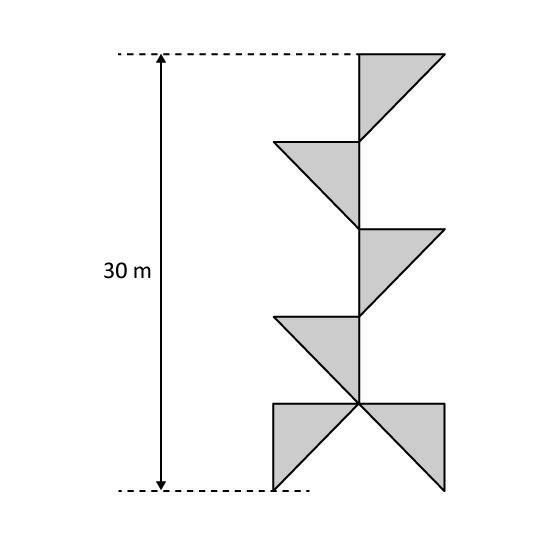Level 3
Some patterns of shaded and unshaded small triangles is given. The unshaded triangles are those which have at least one side on the edge of the big triangle. All of the other small triangles are shaded. The table below shows numbers of small triangles.
- Find the total number of triangles in Pattern 80.
- Find the number of shaded triangles in Pattern 40.
- Find the number of unshaded triangles in Pattern 50.
Level 3
Some patterns of shaded and unshaded small triangles is given. The unshaded triangles are those which have at least one side on the edge of the big triangle. All of the other small triangles are shaded. The table below shows numbers of small triangles.
- Find the total number of triangles in Pattern 80.
- Find the number of shaded triangles in Pattern 40.
- Find the number of unshaded triangles in Pattern 50.
Image in this question is not available.
Level 3
In the figure, ABCD and PRSD are two identical rectangles. Find the shaded area of the figure.
Level 3
In the figure, ABCD and PRSD are two identical rectangles. Find the shaded area of the figure.
Image in this question is not available.
Level 2
In the figure, ABCD is a rectangle with an area of 912 cm2. Given that the area of Triangle DEF is 358 cm2, Find the area of Triangle BFC.
Level 2
In the figure, ABCD is a rectangle with an area of 912 cm2. Given that the area of Triangle DEF is 358 cm2, Find the area of Triangle BFC.
Image in this question is not available.
Level 2
The figure shows a rhombus EFGH. Given that ∠EGF = 57°, what is the value of ∠EHF?
Level 2
The figure shows a rhombus EFGH. Given that ∠EGF = 57°, what is the value of ∠EHF?
Image in this question is not available.
Level 3
Tom had a piece of rope. After he had formed a triangle as shown, he had 15 cm of the rope left. How long was the piece of rope at first?
Level 3
Tom had a piece of rope. After he had formed a triangle as shown, he had 15 cm of the rope left. How long was the piece of rope at first?
Image in this question is not available.
Level 2
The figure, not drawn to scale, shows a regular 5-point star and ∠a = ∠b = ∠c = ∠d = ∠e.
- Express ∠f as a sum of two angles. Give the answers in equation. (Eg ∠a + ∠b)
- lf ∠e = 32°, find ∠f.
Level 2
The figure, not drawn to scale, shows a regular 5-point star and ∠a = ∠b = ∠c = ∠d = ∠e.
- Express ∠f as a sum of two angles. Give the answers in equation. (Eg ∠a + ∠b)
- lf ∠e = 32°, find ∠f.
Image in this question is not available.
Level 2
In the figure, ABCD is a rectangle. Find the area of the shaded part.
Level 2
In the figure, ABCD is a rectangle. Find the area of the shaded part.
Image in this question is not available.
Level 2
The figure is made up of a rhombus ABCD and a trapezium BEFC. DCF is a straight line and ∠BDC = 41°. Find ∠p.
Level 2
The figure is made up of a rhombus ABCD and a trapezium BEFC. DCF is a straight line and ∠BDC = 41°. Find ∠p.
Image in this question is not available.
Level 2
Figure A shows a rectangular sheet of paper. Nellie cut it into 22 identical triangles one of which is shown in
Figure B. There was no paper left over. What was The area of the rectangular sheet of paper before it was cut?
Level 2
Figure A shows a rectangular sheet of paper. Nellie cut it into 22 identical triangles one of which is shown in
Figure B. There was no paper left over. What was The area of the rectangular sheet of paper before it was cut?
Image in this question is not available.
Level 2
The figure is made up of 6 identical isosceles triangles. Find the area of the figure.
Level 2
The figure is made up of 6 identical isosceles triangles. Find the area of the figure.
Image in this question is not available.
